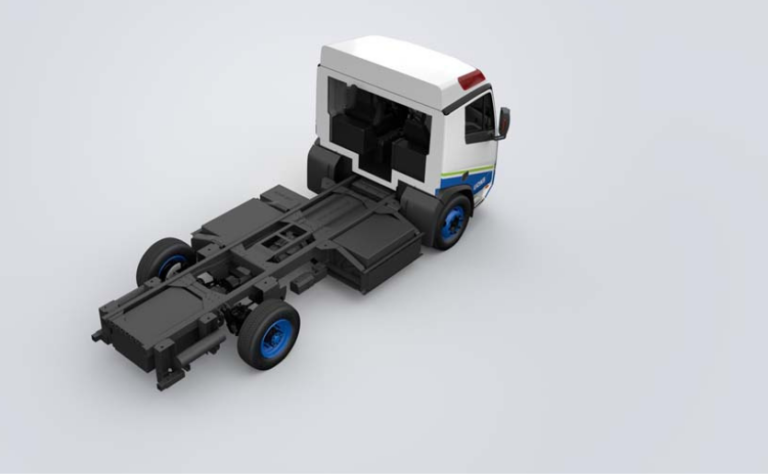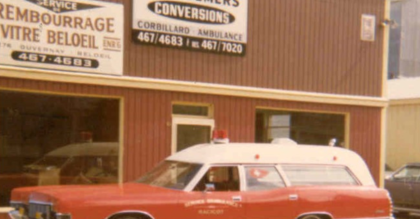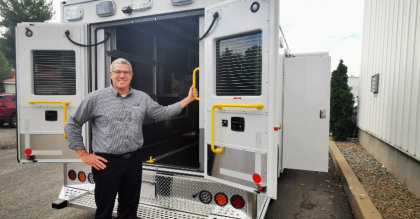After nearly six years of research and development, along with close consultations with paramedics in Quebec and throughout the country, the new Lion5 chassis (Class 5) was custom-designed for the Demers eFX electric ambulance. This is the first and only automotive chassis built to address paramedics’ comfort and efficiency needs, managers’ performance requirements, and patients’ well-being.
In the development cycle, Lion and Demers Ambulances teams analyzed the operational environment of ambulance vehicles and collected precise data on paramedics’ field experience. Through this exercise, the eFX team identified four priorities to guide the engineering of the cabin and interfaces:
• the safety of all occupants during emergency interventions and optimization of intervention and care efficiency
• the comfort of the living space and medical compartment
• the quality of communications (between paramedics and patients, and with external stakeholders)
• the intelligent positioning of controls
Demers knows that this ambulance cabin serves multiple functions for paramedics: a vehicle, an office, and even a second home in some cases. It’s a place where space must accommodate all work equipment, and personal items, and ensure maximum efficiency and safety when the job demands.
With its ergonomic layout, the Lion5 cabin addresses these important factors addressed above by efficiently integrating primary controls and information. There are emergency controls on the steering wheel that aim to provide paramedics with a quicker and safer response time during the driving phases. Its new chassis is also equipped with a 15-inch touchscreen for centralizing ambulance conversion commands, and it also includes noise-free, odor-free, and vibration-free heating and air conditioning. These are just a few of the many innovations that we can expect to see on the road shortly.
Did you know?
There are about a dozen components in an electric vehicle, whereas in a combustion vehicle, there are over one thousand.
What does this mean? It means that the fewer components in your vehicle, the less maintenance is needed, which means there is a lot less downtime.
- Electric motors = 3 to 18 moving parts; 7,000 parts in total.
- Diesel engines = 2,000 moving parts; 30,000 parts in total.
Compared to traditional type III ambulances, the Demers eFX ambulance costs 80 to 90% less to operate per km/mile.
Based on conservative estimates, maintaining and repairing the Demers eFX ambulance should cost 60% less than comparable type III ambulances.







